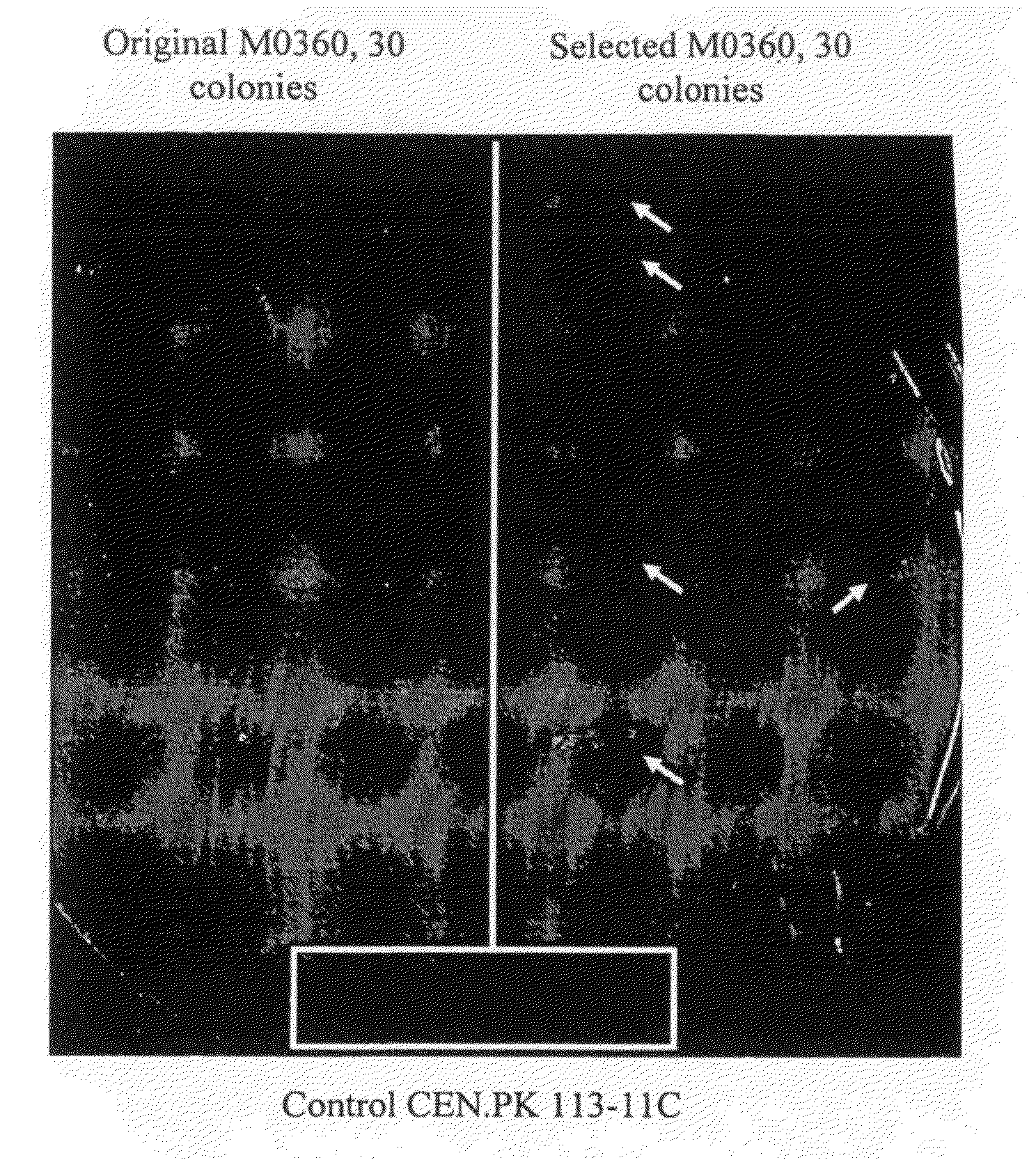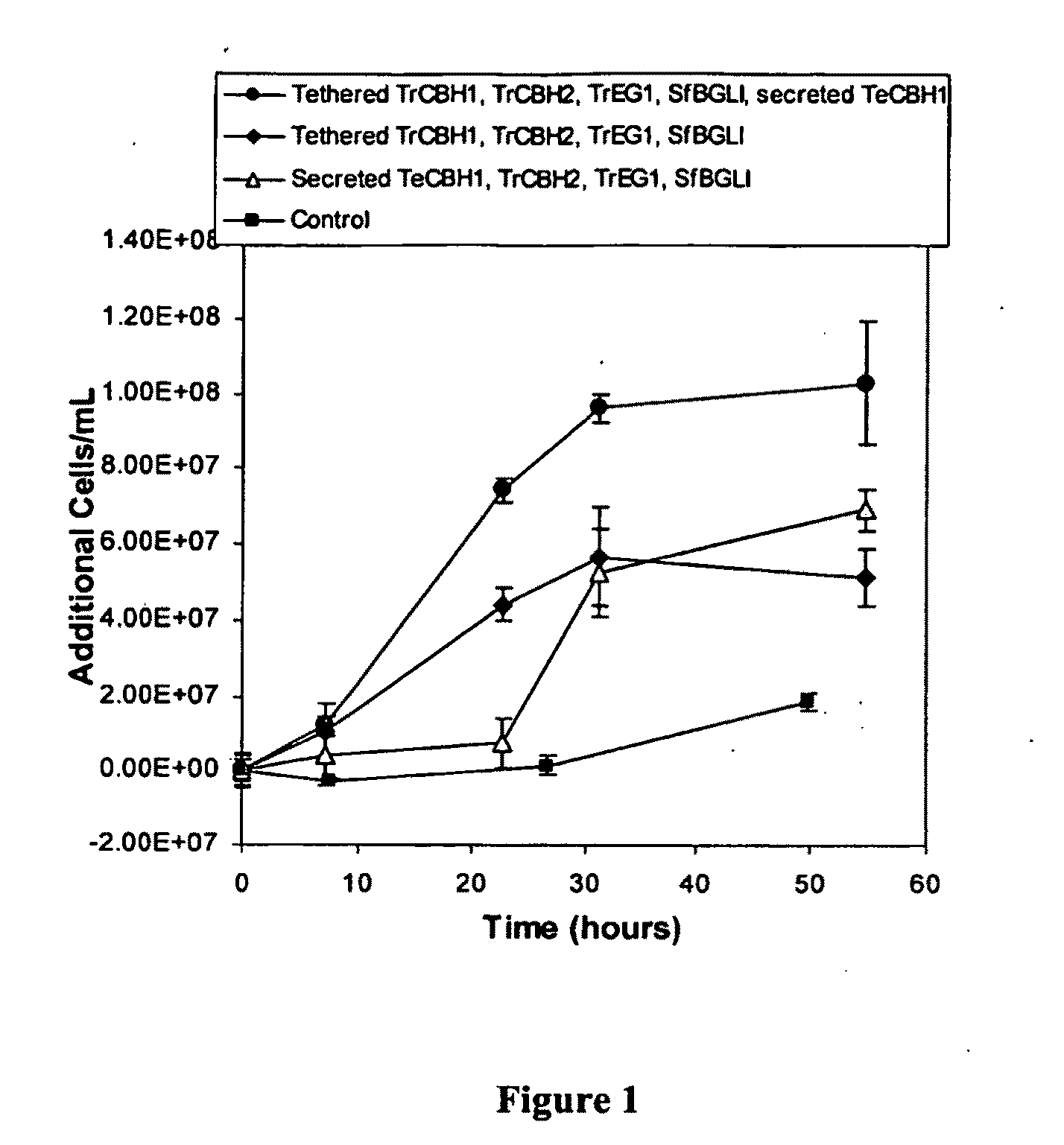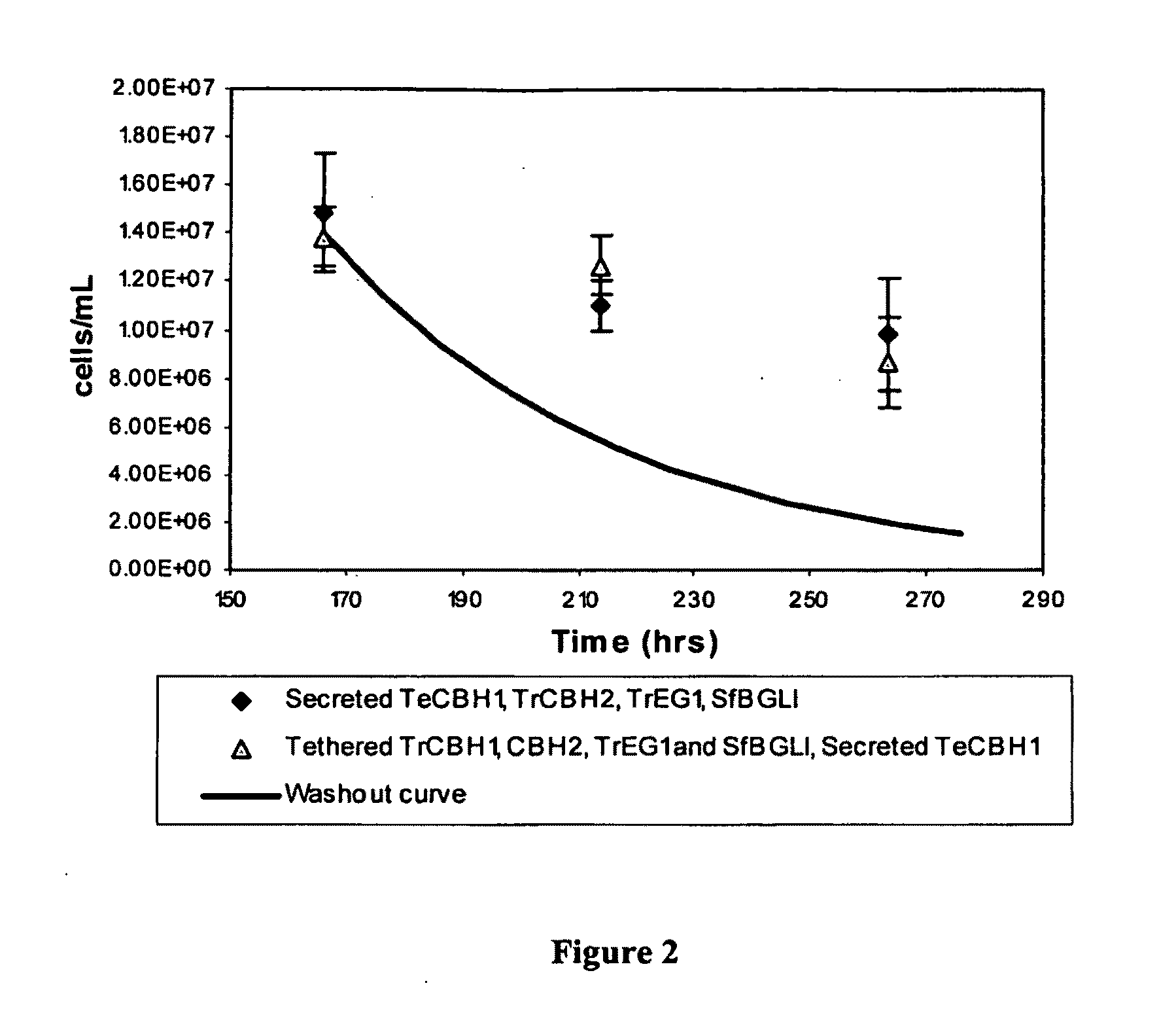Construction of Protrophic/Celluloytic Yeast Strains Expressing Tethered and Secreted Cellulases
a celluloytic yeast and protrophic celluloytic technology, which is applied in the field of construction of protrophic/celluloytic yeast strains expressing tethered and secreted cellulases, can solve the problems of insufficient activity of tethered constructs on insoluble celluose, inability to sustain growth of organisms, and inability to grow on insoluble celluose, so as to improve the ability of host cells
- Summary
- Abstract
- Description
- Claims
- Application Information
AI Technical Summary
Benefits of technology
Problems solved by technology
Method used
Image
Examples
example 1
Expression of Tethered and Secreted Cellulases by Yeast
[0174]In order to combine the possible benefits of secreted and tethered cellulases systems, S. cerevisiae strains containing both types of constructs were created.
Materials and Methods
Strain Construction
[0175]Molecular and transformation methods were used as described in the previous examples. M0144 was transformed with pRDH105 as well as a PCR product for the His3 gene. Transformants were selected on YNB media+glucose with no amino acids present. This ensured that the 2 micron plasmid for TeCBHI expression, which was selectable by the URA3 gene would be present in this strain background. The newly created strain was called M0360.
Results
[0176]Growth results for this strain can be found in later examples.
example 2
Growth of Recombinant, Cellulolytic Yeast Strains on Cellulosic Substrates
[0177]CBP conversion of cellulose to ethanol requires a biocatalyst to grow on cellulosic material. This growth allows the catalyst to propagate from an initial small inoculum and consume the cellulosic substrate producing ethanol simultaneously. This example demonstrates the ability of a number of recombinant yeast strains to grow on a variety of types of insoluble cellulosic substrates, and demonstrates their cellulolytic capability.
Materials and Methods
Cellulosic Substrates
[0178]Bacterial microcrystalline cellulose (BMCC) was a gift from CP Kelco company. BMCC as received was stirred O / N at 4 C in water. After the substrate was rehydrated, it was washed 6 times with water and resuspended in water. The dry weight of the substrate was measured by drying samples at 105 C until constant weight was obtained.
[0179]Avicel PH105 (FMC Biopolymers) was used as provided by the manufacturer.
[0180]Pretreated mixed hardw...
example 3
Recombinant Yeast Strains and Yeast Strain Co-Cultures Fermenting Cellulose to Ethanol (PASC, BMCC, Avicel) without Added Cellulase
[0186]A CBP process requires strains capable of producing ethanol with reduced cellulase loading, and in the ultimate configuration, with no exogenously added cellulase. This example demonstrates the ability of the recombinant yeast strains to produce ethanol directly from cellulose without exogenously added cellulase enzymes.
Materials and Methods
Cellulosic Substrates
[0187]Phosphoric acid swollen cellulose (PASC) was prepared as in Zhang and Lynd, “Determination of the number average degree of polymerization of cellodextrins and cellulose with application to enzymatic hydrolysis,”Biomacromolecules 6:1510-1515. (2005), with only slight modifications. Avicel PH105 (10 g) was wetted with 100 mL of distilled water in a 4 L flask. 800 mL of 86.2% phosphoric acid was added slowly to the flask with a first addition of 300 mL followed by mixing and subsequent ad...
PUM
| Property | Measurement | Unit |
|---|---|---|
| temperature | aaaaa | aaaaa |
| temperature | aaaaa | aaaaa |
| temperature | aaaaa | aaaaa |
Abstract
Description
Claims
Application Information
 Login to View More
Login to View More - R&D
- Intellectual Property
- Life Sciences
- Materials
- Tech Scout
- Unparalleled Data Quality
- Higher Quality Content
- 60% Fewer Hallucinations
Browse by: Latest US Patents, China's latest patents, Technical Efficacy Thesaurus, Application Domain, Technology Topic, Popular Technical Reports.
© 2025 PatSnap. All rights reserved.Legal|Privacy policy|Modern Slavery Act Transparency Statement|Sitemap|About US| Contact US: help@patsnap.com



